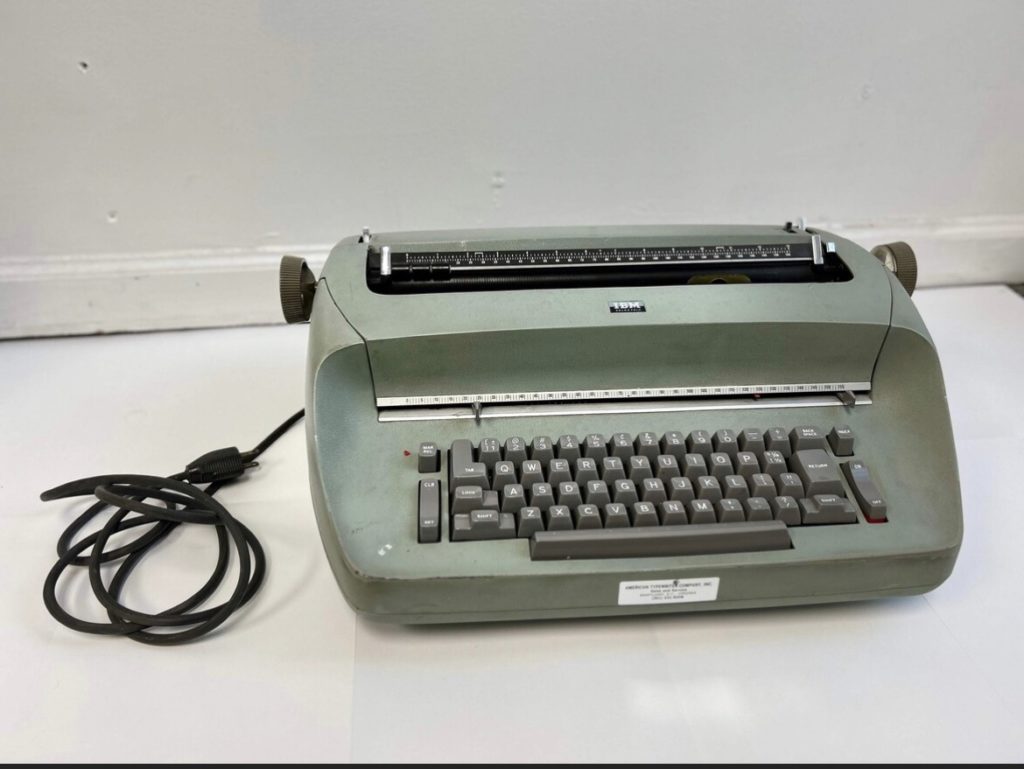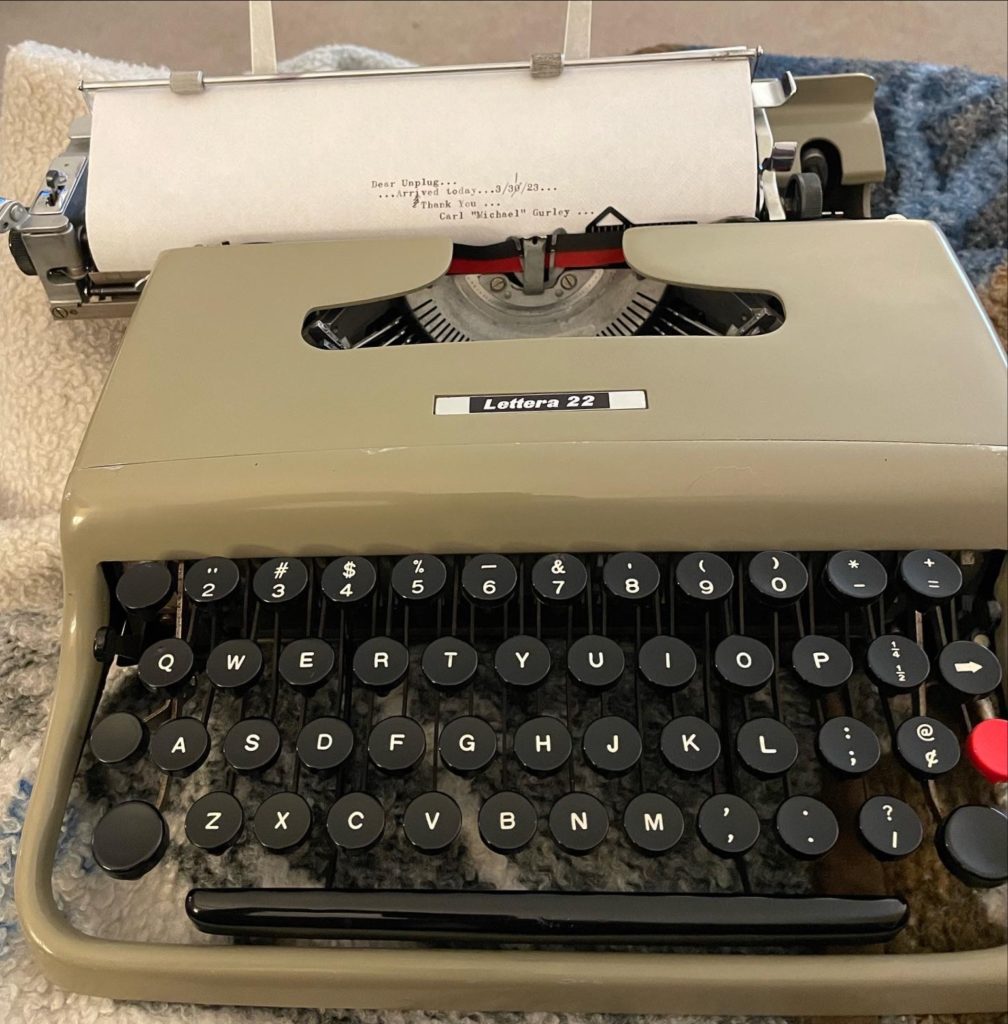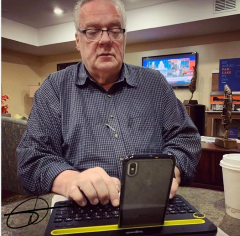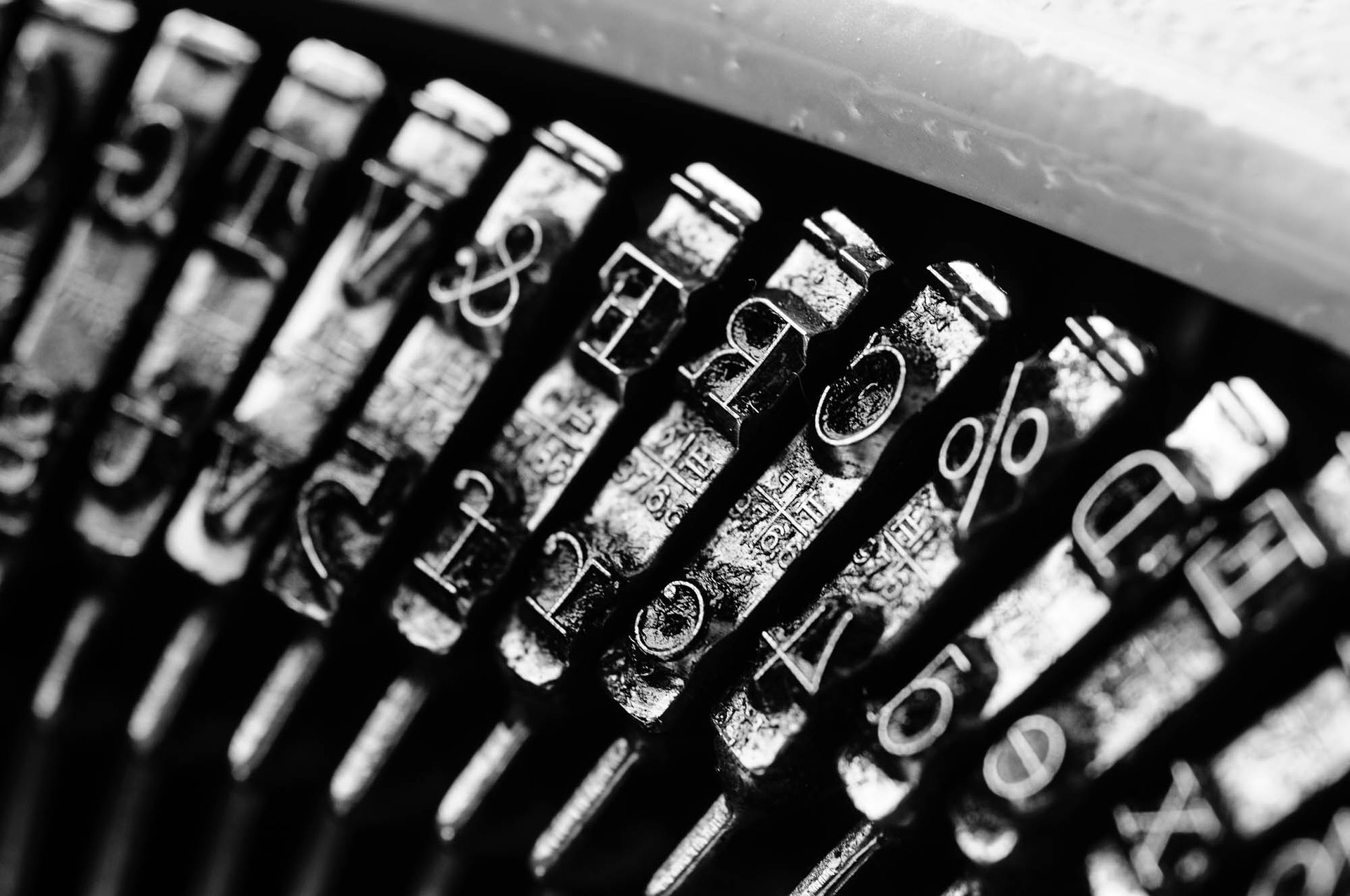I learned to type in high school and never got over 45 wpm. Imagine a 14-year-old knowing this was an important skill! I don’t remember typing at home, where mom had a machine she used for college. I cannot even remember the brand names, but Underwood hangs out on memory tendrils.
Can you imagine all I learned? Key location, by touch, not sight. Elbows tight, fingers on home row – QWERTY, anyone? The feet are properly placed, the back is straight, and the source document is properly positioned. Manually laying out my paper, finding the center, spacing, and spelling everything correctly so you had “0” mistakes!
To this day, typing by sight is significant!
When I started working at a bank, this skill became invaluable. Long with all my other business classes, it seems my future kept me in offices and computer rooms. I’m okay with that, as I’m not sure a craft or trade would have suited me.
If a manual typewriter was all I experienced, I’m not sure what the future would behold. Why? Manual typing is like manual labor!
Whoa! Then I found out about an IBM Selectric!

Suddenly, my speed grew exponentially! And, it had corrective tape to correct a mistake and an interchangeable ball with different fonts.
It was similar to mainframe keyboards, and that became my life’s blood of income. Hardwired Dumb Terminals long before PCs with similar keyboards. IBM had a winner!
Around here somewhere, I have a college student’s manual portable typewriter I bought at a garage sale in Anchorage, Alaska. I bet I could find that house today, nearly 40 years later.
Through my years of keyboarding, I’ve written millions of words, computer programs, and commands. Not that I’m anyone special, I judge the quality of experience based on the ability of the keyboard to flow. Smooth keys….responsive touch…
Several weeks ago, I bought a 1955 Olivetti Lettera 22. Why? I reached out to the Unplug Typewriter Company out of Hope, Arkansas, months ago, looking for a typewriter from my birth year, 1955. She said she would look through her stock and see what she could find. “It may take a while…” and I was fine waiting. Then it happened.

This jewel is 68 years old this year. Thank you, Meagan Sayta.
What will I write? Develop new memories while using? Or dream new words onto a page?
How far has technology taken us? How much further can we go? From bone and stone, paint, cave walls, quills, papyrus, homemade ink, and paint. Then, paper creation became a modern reality. From parchment to all the fancy kinds we think nothing about today. Along the way? The marvel of machines.
I’m so glad we’ve moved forward. Hand cramps on a hand written paper tells that style of writing was not for me!
What will it be like in 68 more years? Time will tell, and someone else will have to share what they did with this 68-year-old typewriter I picked up the year I turned 68.

